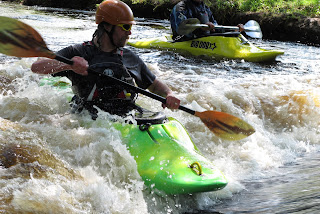
The water tumbles in waves, cresting and falling. The broken horizon. This is the point fear presents its ugly claw, if you let it. Previously I spoke about ‘fear’ and ‘It is foolish beyond belief to be scared of the river you are descending, we made the choice to be on the river, we have control over our own actions. Some evil genius did not capture us and place us on the water. We need to compartmentalize where this fear sits’ this can be read online
I am more than aware that others do not hold the same view as myself. Some people are numb to it all whilst some confuse fear and anxiety, fear and nervous anticipation. Fear of the humiliation from peers, fear of letting one’s self down. . Fear of death-over life is one thing, fear of embarrassment quite another. But is it all that obvious. The martyr will not think so. Although I am not saying we all martyr to the cause.
I accept that we are tied to a linguistic boundary, where language binds the true meaning of what we are saying. The words not said, hidden away from all are perhaps the crux. I would like to look beyond this word now and look away into the mind, at a personal place where in an instant we classify our acts. I am taking it beyond looking at fear – the danger, immediate and present in all we do – at every junction of life. Perceived immediate danger – what your response is, relies on who you are, where you are, your confidence and competence to given situations. I questioned this previously in an essay on Risk.
Perhaps now it is possible to look at the points on a mental graph, a place our unconscious mind takes us when we move forward at the limits of our experience. A place we move in unknown grounds.
Over the last few weeks many people have explained that they think I am a ‘crazy man’ or ‘a fool’. Do I have no regard for my own personal safety, or thoughts of those close to me. ‘How could you paddle that river? It is too risky?’
Perhaps this is the issue. Risk, for me, is a concept that can be both ridged and fluid. A place that can be held in tight bonds as a social normality, or a place dynamic, hard to pin point.

Let us look at two points of risk. These are the possible and the probable. For my part, over the last 20 years I have – I think now- accepted that my unconscious mind links these two points on an abstract graph. A graph were the possible if offset by the probable.
Running the big fall on the Mawdach, for example. How do you look to asses this – a drop that has been done only by a limited number? First I think we look at the possibility. We look, in a visual way at the line, the previous beta and our skills and base level of functioning. It is possible. If no previous beta we look at the probable – e.g it will probably be ok / far from exact, with skills and knowledge we can source the possibility from this probability. But we can then look and ask what is the possibility of the probability happening. Is it possible that I will get hurt, but is it probable? Is it possible that I will not be able to paddle the line however improbable. If we then,at an unconscious level, draw a graph. The possible and probable intersect at set points. Although some points on the graph could be mobius in nature, where answers cannot connect. We then have the personal judgement call to act. We are not crazy, it is not fight or flight, this is deeper, this is much more – calculated and planned We can choose to accept or deny the possibility via our subjectively whilst also understanding the probability of this happening
At the point of danger, where the real possibility of danger occurs are we not placed in a position of opportunity and/or in a crisis situation? It is how we adapt to this crisis that allows for opportunity – many know this from the Chinese character crisis+danger=opportunity. We can then grow our personal frame of reference that will assist further in our adaption of the probability dynamic.
Let us look at how this opportunity allows growth. We all strive to move beyond our safety net, even as a social hub this is true. We move on and evolve. It is also true for all the sentient beings. We need a place and a time to allow our mind and body to grow and build skills to progress. Whilst coaching can and does give practical advice on this, few settle on the definition of cognitive personal analysis – how can they. Cognitive analysis of your own performance is, only and forever, an internal jewel. No one can show you this, only a guide can be offered and even this is not finite.
Whilst these words do and shall be developed over time, I hope that the ideas add food for the mind.










